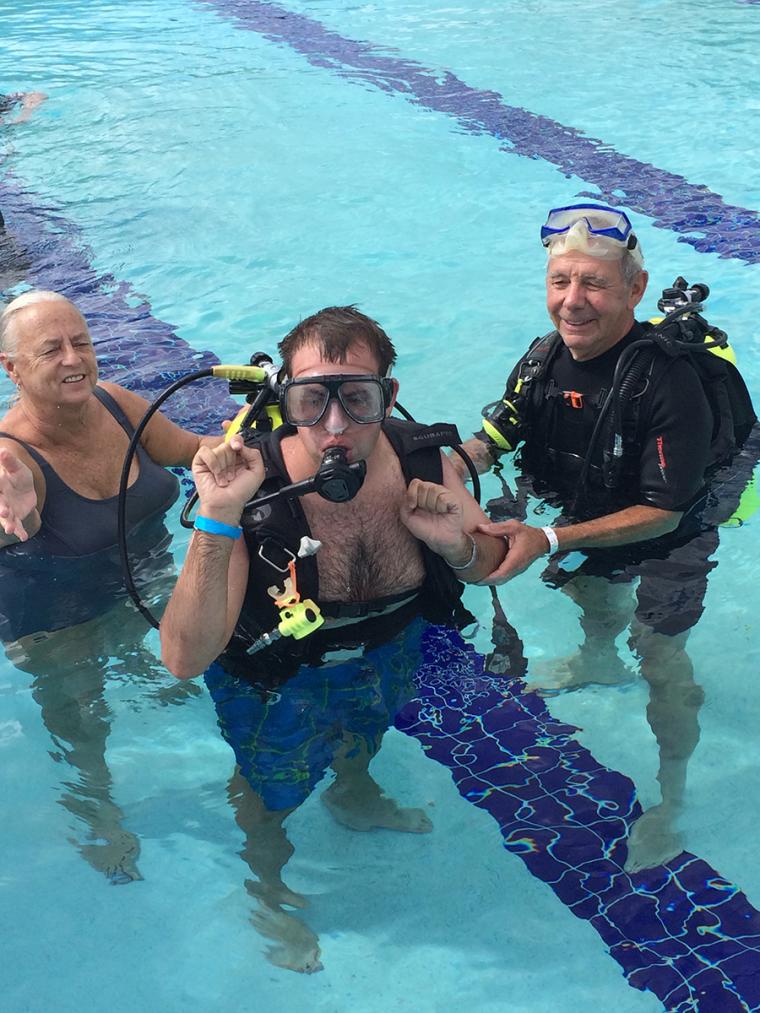

Being caught unprepared can mean someone has a disappointing experience with your event – something nobody wants to happen. And as the world becomes increasingly accessible, there’s no reason for events to overlook the basics of accommodating a diverse population – including those with special challenges and specific needs.
Successfully integrating people with disabilities into athletic events means taking steps to show those people that you are interested in accommodating them. Times were, you could put a check box on your registration form for people to indicate if they had special needs; however, that forces planners to be reactive, rather than proactive. Assembling an accessible tournament, meet or other event from the ground up is a best practice.
So where do you start? First, with the registration materials. Second, work on the planning of your event, and finally, design your follow-up. Here are some suggestions we’ve used at the Florida Disabled Outdoors Association (FDOA). They may not all be relevant to your tournament and you may come up with more ideas of your own by reading through them. Just think of them as a starting point:
Registration Materials
When you design your registration materials, make sure people with disabilities know that they are welcome. Your marketing pieces need to show that people with disabilities will receive the accommodations that will make the event or program easy for them to attend. Use more thought than simply having that check-box we mentioned previously. For example, including photos in your marketing pieces that depict persons with disabilities participating in sporting events is one way to help people feel included – and to give them the heads-up that you are ready and willing to host all participants.
 Provide information about the accessibility of the facility where your program will be held. Include information about the building, such as location of curb cuts, roll-in shower and pool lift availability in advance in your marketing materials and have appropriate, easy to read, signage on-site.
Provide information about the accessibility of the facility where your program will be held. Include information about the building, such as location of curb cuts, roll-in shower and pool lift availability in advance in your marketing materials and have appropriate, easy to read, signage on-site.
Avoid using outdated terms like “handicapped athlete” or “disabled person” and instead use “People First” language, such as “person with a disability” or “athlete with a disability.” This puts the focus on the person rather than on their disability.
Make the information on your website usable by people with vision impairments. Even PDF files can be read using assistive technology if they are formatted correctly.
Because of privacy concerns, getting a mailing list of individuals with disabilities can be challenging. However, if you put the word out at places like V.A. hospitals, rehab facilities, associations that provide services to amputees and others with mobility impairments, as well as, recreation and parks departments and similar venues, you may find that you are able to connect with people who are able to help publicize your program.
When Planning Your Event
Provide sign language interpreters. You may not have any hearing-impaired people attending your event the first time you provide this service, but word of mouth travels. Once people with hearing impairments find out that you have this service, they will start to attend your programs. This goes for all types of disabilities, too. Communities of people with disabilities are incredibly well-connected and they will share information about accessible events that were fun for them.
Make sure that your receptions, computer stations and information booths have tables that are low enough to be accessed by someone who uses a wheelchair.
 Recruit volunteers who would be willing to assist a person with a disability with their needs. (More about this in a minute.) Once you have committed volunteers, market that you have this service available upon request. The person with a disability and the volunteer can determine together what those needs may be. If you need to create a “think tank” by contacting some local groups that work with individuals with disabilities, you’ll get even more ideas for how to make things accessible.
Recruit volunteers who would be willing to assist a person with a disability with their needs. (More about this in a minute.) Once you have committed volunteers, market that you have this service available upon request. The person with a disability and the volunteer can determine together what those needs may be. If you need to create a “think tank” by contacting some local groups that work with individuals with disabilities, you’ll get even more ideas for how to make things accessible.
Remember that not all disabilities are visible. Some individuals may have cognitive or sensory issues. Some may wish to bring a companion, family member, assistant or other person who gives care or support – and those people, of course, should be welcome at the event as well.
While some sports events will call for special training of volunteers and safety personnel (certain water sports and snow sports come to mind, although certainly there are more), others may simply require an overview of what will be needed and how to help. Not every volunteer will require first aid training or a comprehensive understanding of the athlete’s diagnosis in order to be of assistance with the event.
Think outside your sports venues. Make sure that your aisles in exhibit halls, receptions, banquets, dinners, silent auctions and rooms for ancillary events are wide enough for a wheelchair to navigate. It is frustrating for people to want to see an event, but be unable to get to it. A silent auction that can only be reached via stairs will limit the number of people who can bid on items. Remember too, events that have athletes with disabilities and special needs may have spectators with disabilities as well. Make sure your seating, concessions, parking, restrooms and other accommodations are suitable.
If you are holding functions off-site, make sure that the transportation arranged is accessible. The same considerations should be given to these special events as you give to your general program.
Make sure the correct pieces of adaptive equipment are in place for people to use. This may call for making some calls to, or visits to, places where individuals with disabilities are. Don’t put off renting what you need or making arrangements to borrow it – some equipment may be hard to find at the last minute, and nobody wants to be caught without something an athlete requires in order to fully experience an event.
 At the Event
At the Event
If someone approaches a staff member on-site and indicates they have needs, by all means, it’s okay to ask that person how you can help them; don’t worry that they will be offended. Many people are very independent and can advise you on how or if they need assistance.
Sometimes, that can intimidate volunteers or staff members; they’re just not sure how to act around a person who has a disability. They don’t know whether to offer to help – for example, does someone want their wheelchair pushed? Does someone with a visual impairment need to be led to a restroom? In all cases, we encourage people to reach out and offer help. If someone doesn’t need help, they’ll say so – but they’ll be grateful for the gesture.
Unless you are specifically planning an event for individuals with disabilities, it is unlikely you will be overrun your first year. However, word of mouth is a powerful tool in the community and with the rise of social media, it’s likely that a good experience will be talked about and shared – and that you will see an increasing population as you move forward with your event. Which brings us to our last point:
Follow-Up
Good planners like to find out how things went for all their athletes, officials, families and others. Don’t underestimate the importance of a post-event survey in gauging the success of your event. As with all surveys, keep an eye on the data and work on incorporating suggestions into next year’s tournament. Keep an eye on social media as well; you may see comments there.
There’s no need to be overwhelmed with worry about making accommodations for athletes with disabilities. Plan early, create a welcoming environment, ask questions and make as many of the arrangements as you can well in advance. Your athletes (those with disabilities and those without) will appreciate your dedication to their experience. SDM

